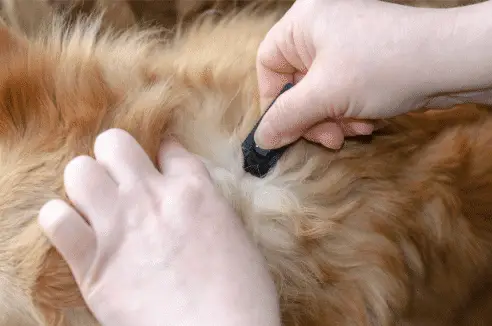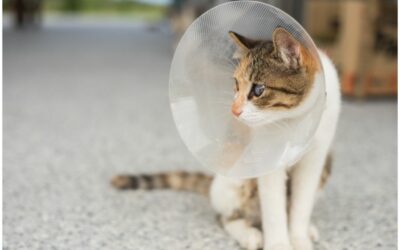Fleas are a frustrating and distressing issue for any pet parent. In my clinic, a very common question comes from people that are trying to figure out why their flea treatment is not working. The answer is often in the details; A small lapse in flea treatments or the use of a substandard flea treatment ‘just this once’ can lead to months of flea bites and stress while trying to get rid of the fleas from your pets and your home. And problems get even worse if your cat has a flea allergy!
So what if you think you’re doing everything right when it comes to the treatment, but your cat still has fleas? What might be going wrong? Treatments most commonly fail for one or a combination of five reasons:
- Using the wrong product
- Failing to apply the product correctly
- Using the wrong treatment interval
- Failing to treat all the pets in the household at the same time
- Fleas are still hiding in the household
1. You’re using the wrong product
There are many flea treatments available, varying from non-prescription pet shop products without a veterinary license, to prescription-only veterinary treatments. You may think that all flea treatments are the same, but actually, there are substantial differences.
For instance, if a product doesn’t have a veterinary license, the amount of the active ingredient it contains (you know, the stuff that kills fleas!) is not regulated. A pet shop flea treatment product could be labeled by the manufacturer as very effective, but in reality, it may only contain a fraction of the amounts required to guarantee full extermination.
There are also valid occasions where fleas appear not to respond even to an effective and regulated veterinary product. In this instance, as long as no other reasons for treatment failure are identified, the flea treatment can be changed to a different medication.
2. You used the wrong treatment interval
Remember that each flea treatment will have a recommended dosing interval. This is usually once every month, but it can vary. You should always follow the recommended interval because these instructions are specifically written to match the life cycle of fleas, which is about 1 month to go from egg to adult.
Vetbabble.com mentions a female flea can lay up to 50 eggs a day, so it’s no wonder that they can multiply to thousands in just a few short days. Being late with your dose can quickly lead to new infestations, especially if your cat has a bigger flea problem.
A good tip is to mark the next treatment on your phone or calendar every time you give a treatment. If you’re wondering why your cat’s flea treatment isn’t working, this could very well be the culprit!

3. You haven’t treated your other pets
If you have other pets, it’s really important to treat them all at the same time. If you skip one, the fleas may jump from one pet to another, hiding on an untreated pet and waiting to re-infect when your other pets’ treatments have run out.
4. Fleas are still hiding in the household
It is a great idea to treat your household with a concentrated flea spray like this one every year, regardless of whether you have noticed fleas. But if you know that one of your pets has had fleas recently, treating your household as well as all in-contact pets becomes absolutely vital to guarantee complete extermination. You should make sure that no pets are in the room when you use the flea spray, and ventilate the area well for a few hours afterward before allowing people and animals back in.

5. You didn’t apply the product to skin

Flea medication needs to be applied properly for it to work at its full potential. According to Pedmeds, applying a product only to the surface of the hair is not enough.
It is important to completely part the hair and apply the product directly to the skin so that proper skin and hair follicle distribution can occur. This is something that can be somewhat of a challenge for thick haired pets; however, the pet medication will not work properly if only the hair follicles receive the medication – it must be applied to the skin
Source: https://blog.petmeds.com/ask-the-vet/flea-medication-not-working-on-pets/
So, how do I get rid of fleas?
To recap: Use a quality product, follow the instructions, and be sure to treat your cat’s surrounding pets and environment to get the best results. Even if you do everything right, you may get an occasional breakthrough flea problem. It can feel like nothing is working. But if you follow all the points above strictly, you should eventually succeed at ridding your home and pets of fleas. Remember: it’s not always a quick fix and may require a few months of strict treatment to see complete resolution.




